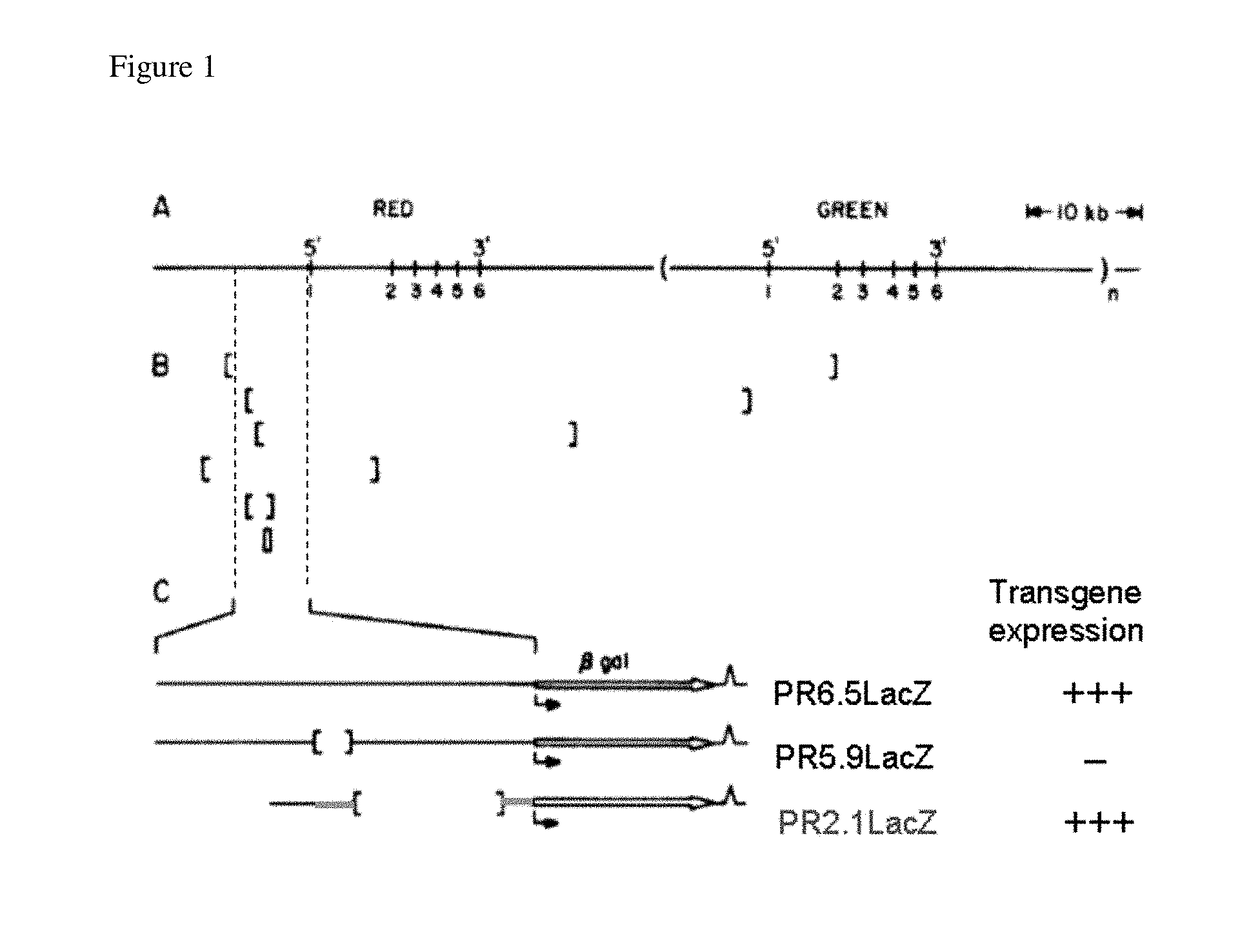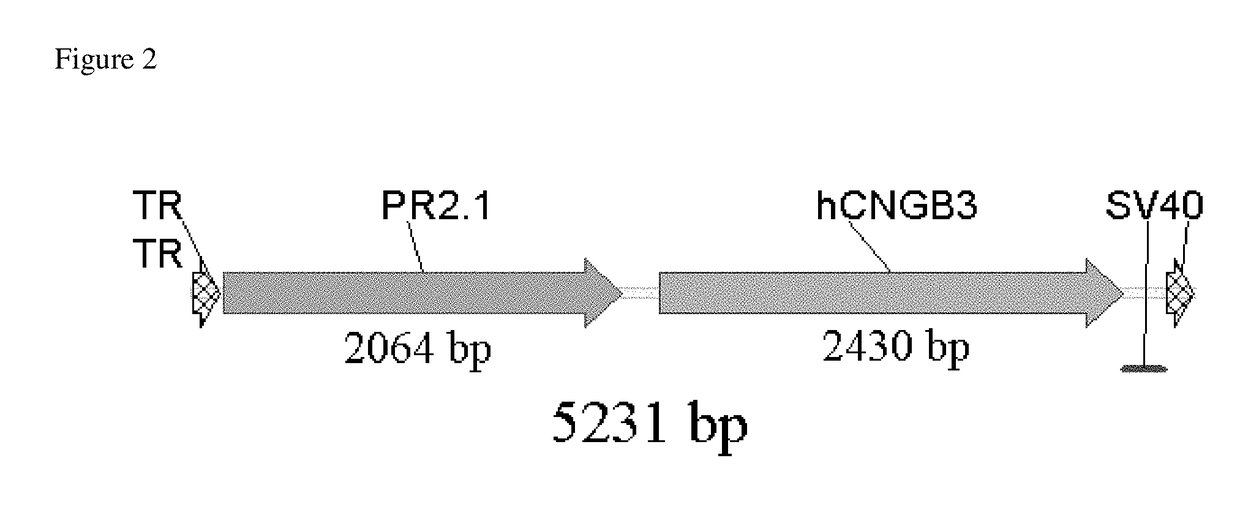Promoters, expression cassettes, vectors, kits, and methods for the treatment of achromatopsia and other diseases
a technology of achromatopsia and other diseases, applied in the field of autosomal recessive retinal disease, can solve the problems of low yield, no treatment available for achromatopsia, and low efficiency of raav packaging
- Summary
- Abstract
- Description
- Claims
- Application Information
AI Technical Summary
Benefits of technology
Problems solved by technology
Method used
Image
Examples
example 1
and Testing of Shorter Versions of the PR2.1 Promoter
Materials and Methods
[0101]FIG. 2 shows a schematic drawing of the proviral plasmid containing AAV terminal repeats (TR), the PR2.1 promoter and the hCMGB3 transgene. The PR2.1 promoter was shortened by making truncations starting from the 5′-end of PR2.1. The 500 bp core promoter and the 600 bp locus control region (LCR) of PR2.1 were left intact. Three shortened versions of the PR2.1 promoter were created: PR1.7, PR1.5, and PR1.1. PR1.7, PR1.5, and PR1.1 were created by truncating PR2.1 at the 5′-end by approximately 300 bp, 500 bp, and 1,100 bp, respectively.
[0102]SEQ ID NO: 1 corresponds to PR1.1 promoter
[0103]SEQ ID NO: 2 corresponds to PR1.5 promoter
[0104]SEQ ID NO: 3 corresponds to PR1.7 promoter
[0105]SEQ ID NO: 4 corresponds to PR2.1 promoter
[0106]A CMV enhancer was added to the 5′ end of the PR1.1 to create a hybrid promoter. Proviral plasmids that contained each of these promoters were created, as shown in FIG. 3. These ...
example 2
n in Non-Human Primates
[0119]Further studies were carried out to evaluate three cone-specific promoters and three AAV capsid serotypes by comparing their efficiency and specificity to target L, M and S cones in nonhuman primates (NHP), using rAAV vectors expressing green fluorescent protein (GFP). In the first study, six cynomolgus macaques received bilateral subretinal injections of AAV2tYF-GFP containing a PR1.7, CSP, or PR2.1 promoter. Each eye received two injections of 0.1 mL of AAV vector at a concentration of 5×1011 vg / mL (two 0.05 mL blebs / eye, 1×1011 vg / eye). Twelve weeks post treatment, retinal tissue was obtained for quantitative reverse transcriptase PCR (qRT-PCR) and immunohistochemistry. The vector with the PR1.7 promoter was found to result in robust and specific targeting of GFP-reporter gene expression (Grade 3) in all three types of cones in the subretinal bleb areas in all NHP eyes. FIG. 7 shows the results of in-life fundus autofluorescence imaging (FAF) to detec...
PUM
| Property | Measurement | Unit |
|---|---|---|
| wavelength | aaaaa | aaaaa |
| wavelength | aaaaa | aaaaa |
| wavelengths | aaaaa | aaaaa |
Abstract
Description
Claims
Application Information
 Login to View More
Login to View More - R&D
- Intellectual Property
- Life Sciences
- Materials
- Tech Scout
- Unparalleled Data Quality
- Higher Quality Content
- 60% Fewer Hallucinations
Browse by: Latest US Patents, China's latest patents, Technical Efficacy Thesaurus, Application Domain, Technology Topic, Popular Technical Reports.
© 2025 PatSnap. All rights reserved.Legal|Privacy policy|Modern Slavery Act Transparency Statement|Sitemap|About US| Contact US: help@patsnap.com



